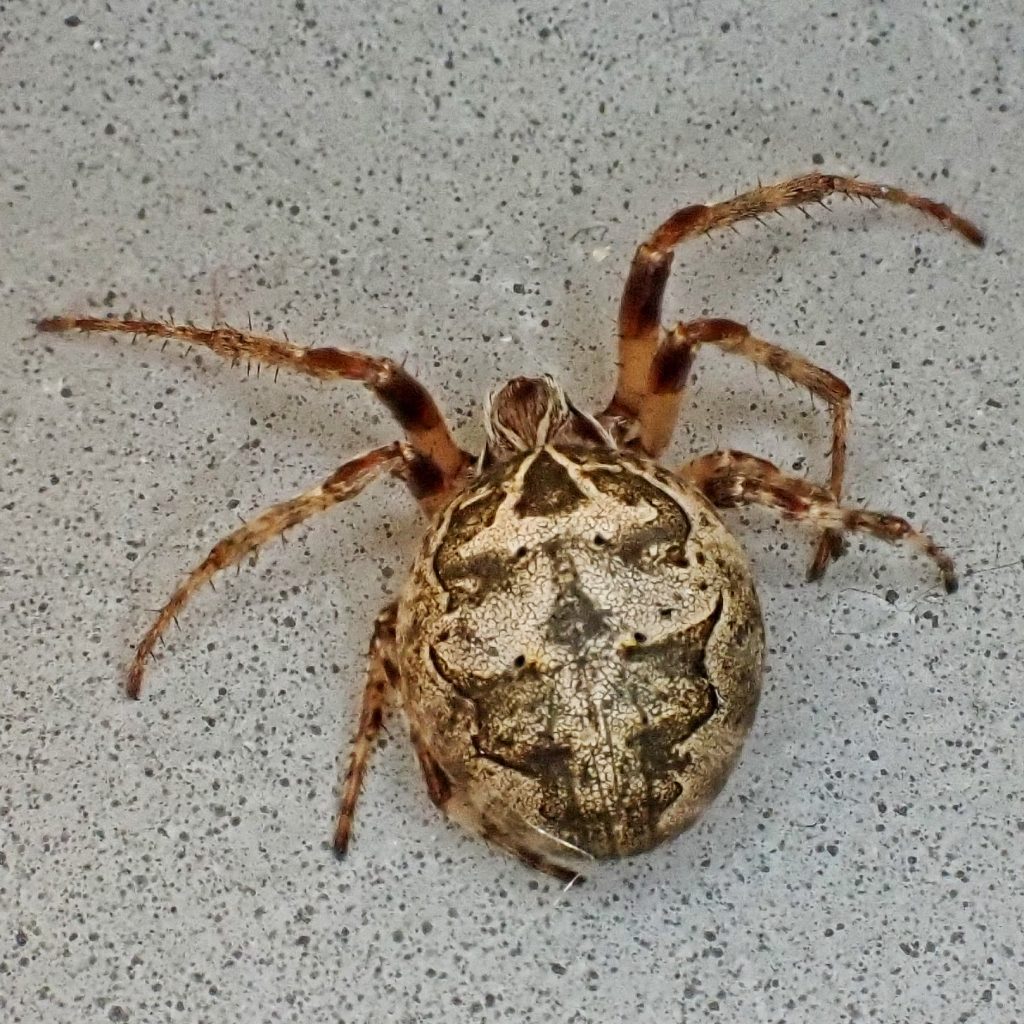
These two spiders, a male and female Larinioides sclopetarius, were in the same web by the light outside the door of a men’s restroom, and were the first spiders I collected using the trekking pole system I talked about in the blog ‘In Search of Spiders’. After looking closely at them during their photo shoot, and then doing a comparison to online pics, I was pretty sure they were Larinioides, and likely L. sclopetarius, but I just couldn’t rule out L. patagiatus, so I had to euthanize them and examine the genitalia. For most people in most situations, thinking that they are probably Larinioides sclopetarius’ would undoubtedly be sufficient, but for the purposes of these profiles I need to be sure, if certainty is a possibility for someone of my skill level. And using Levi’s key and illustrations v.146 (1974-1975) – Bulletin of the Museum of Comparative Zoology at Harvard College – Biodiversity Heritage Library (though he placed them in the genus Nuctenea), I was able to positively identify them as L. sclopetarius, a fact that Rod Crawford was kind enough to confirm for me.
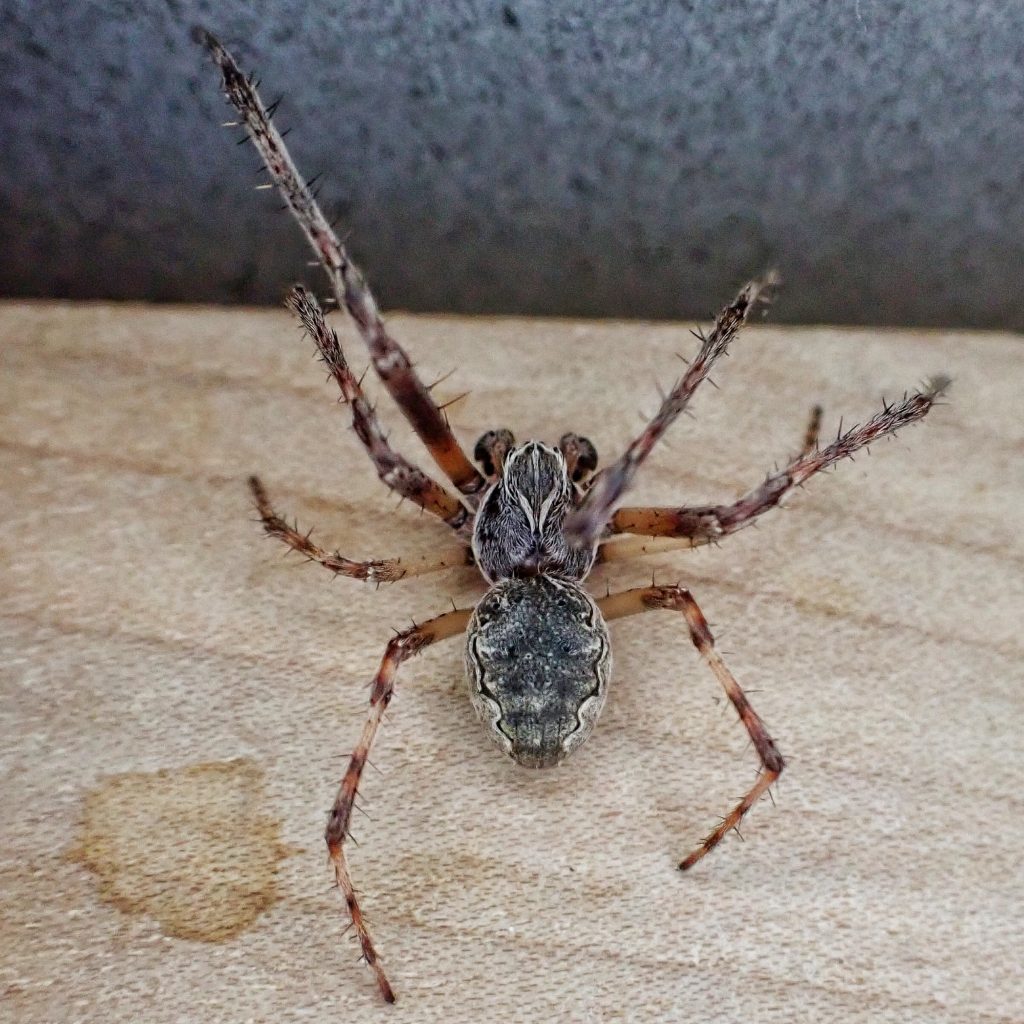
These handsome members of the family Araneidae also go by the common name bridge orbweaver, because that is where they are often found, as Eric Eaton talks about- “Downtown Portland, Oregon features a promenade on both sides of the Willamette River, and it is a stroll, bike ride, or jog worth taking simply for the scenery and people-watching. Should you be interested in spiders, it is even more worthwhile. Many manmade structures are occupied on the exterior by the Bridge Orbweaver, Larinioides sericatus [sclopetarius]. Even in December and early January of this year, specimens of varying ages were abundant.” https://bugeric.blogspot.com/2015/02/bridge-orbweaver-gray-cross-spider.html. . At the time Eric wrote this the species epithet had been recently changed from sclopetarius to sericatus, but the research that changed that nomenclature was later invalidated.
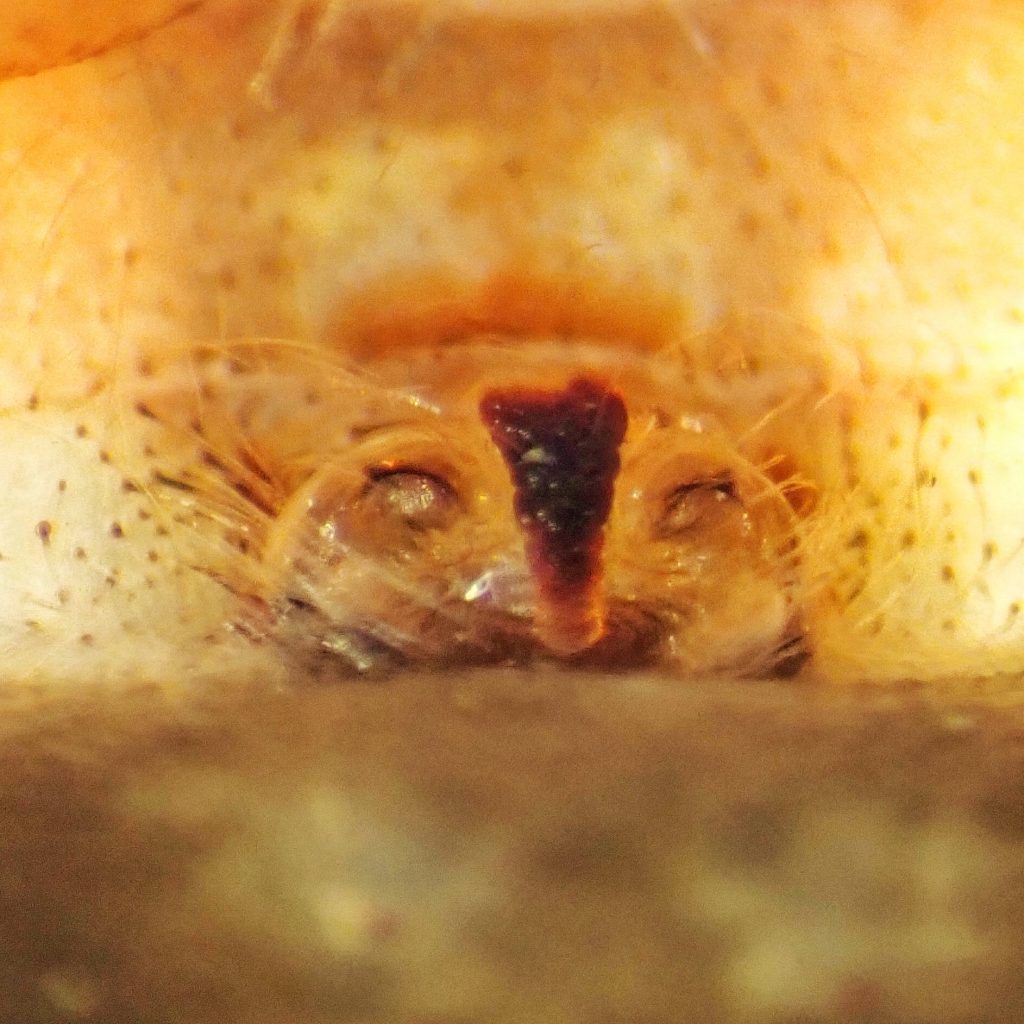
Studying this species in Hamburg to try to determine why it is such a successful colonizer and invasive species, Anja Kleinteich(2009) discovered that “Contrary to Dyar’s rule, growth ratios in Larinioides sclopetarius decrease with successive instars. However, growth can be described by a geometric progression: either by an exponential function for weight increase over instar or by a power function for weight increase over development time. Bridge spider development shows full plasticity: all developmental parameters, including growth factor (respectively growth coefficient), the number of instars, and the aging factor, highly depend on food availability. High growth rates due to overabundance of prey had no effect on mortality, suggesting that bridge spiders experience no intrinsic physiological costs of fast growth. Accelerated growth, earlier maturation, and thus rapid reproduction under high prey densities allow bridge spiders to be an extremely successful invasive species in urban habitats.” https://d-nb.info/999993666/34
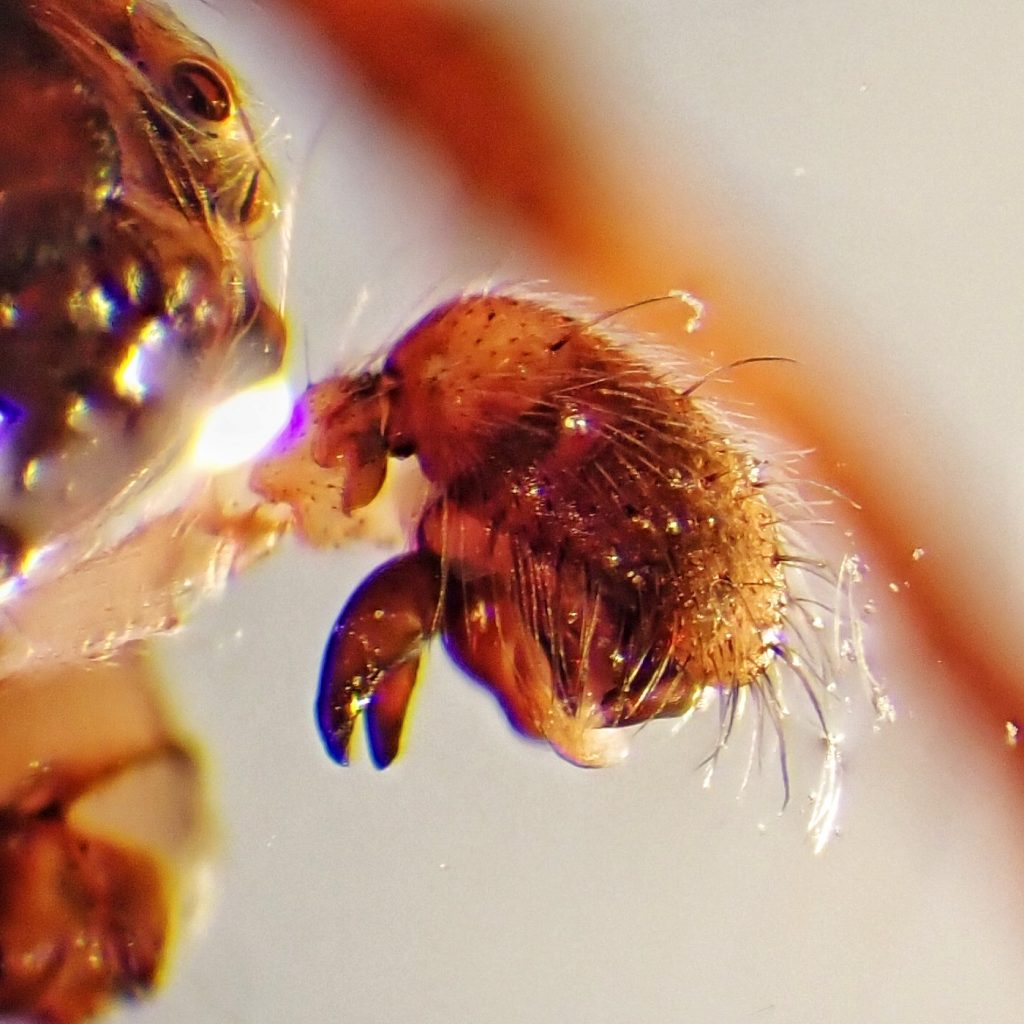
Description– Medium sized (total body length of females is 6-14mm; males 6-8mm) grey to dark brown spider with relatively long legs; both sexes tend to have an inverted ‘V’ at the front of the abdomen and a ‘V’ in the center of the carapace, as well as a light colored border to the carapace, and a dark middle band on metatarsus IV; males have cylindrical tibia 2, which lack clusters of macrosetae.
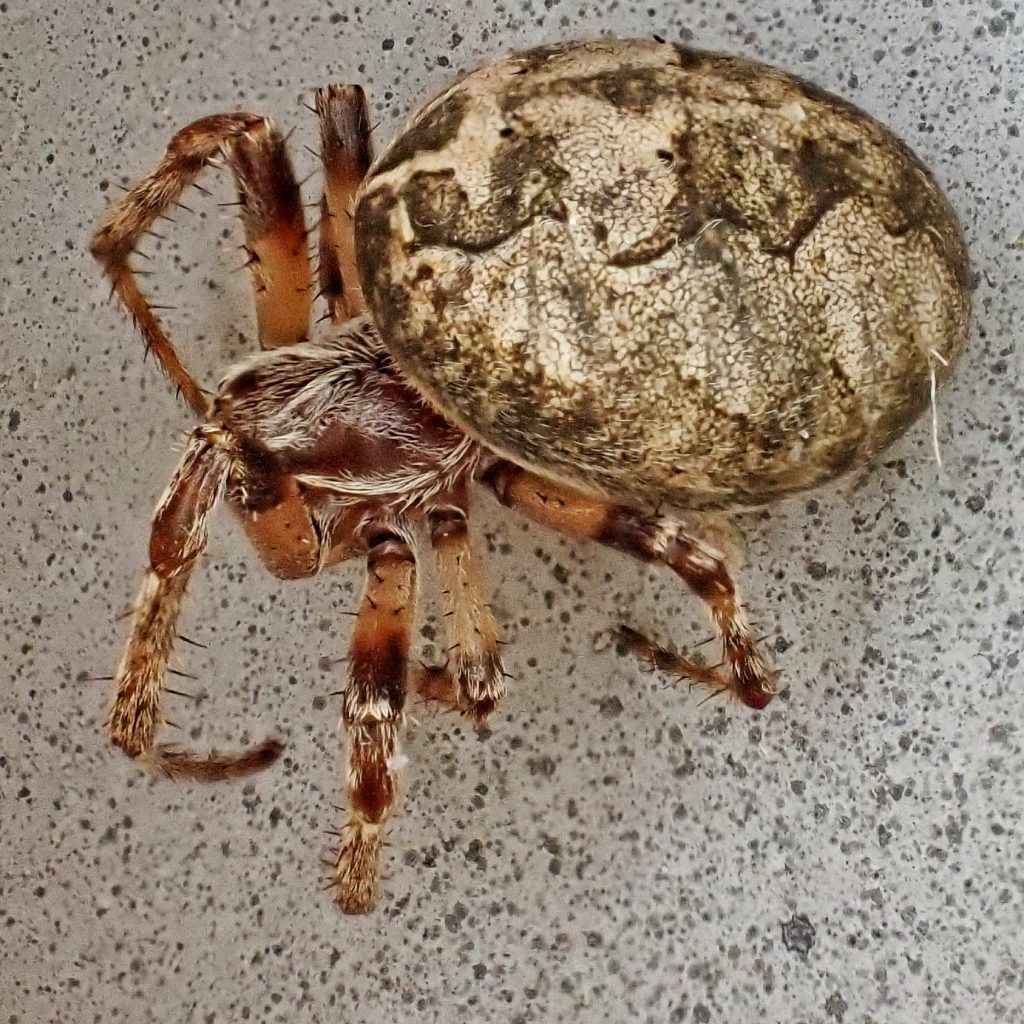
Similar species– “Separating Females: L. cornutus have a shiny, bald appearance and shorter legs, and no middle band on metatarsus IV. L. patagiatus have a more jagged border and a less shiny appearance. It has two pattern forms, but overall is more variable than the other two which is why it can look similar to both other species. L. patagiatus also has a dark middle band on metatarsus IV…[male L. cornutus and L. patagiatus] have clusters of macrosetae on tibia II. Compare macrosetae on tibia II here” Genus Larinioides – Furrow spiders – BugGuide.Net , which has a great photo comparison of the three.
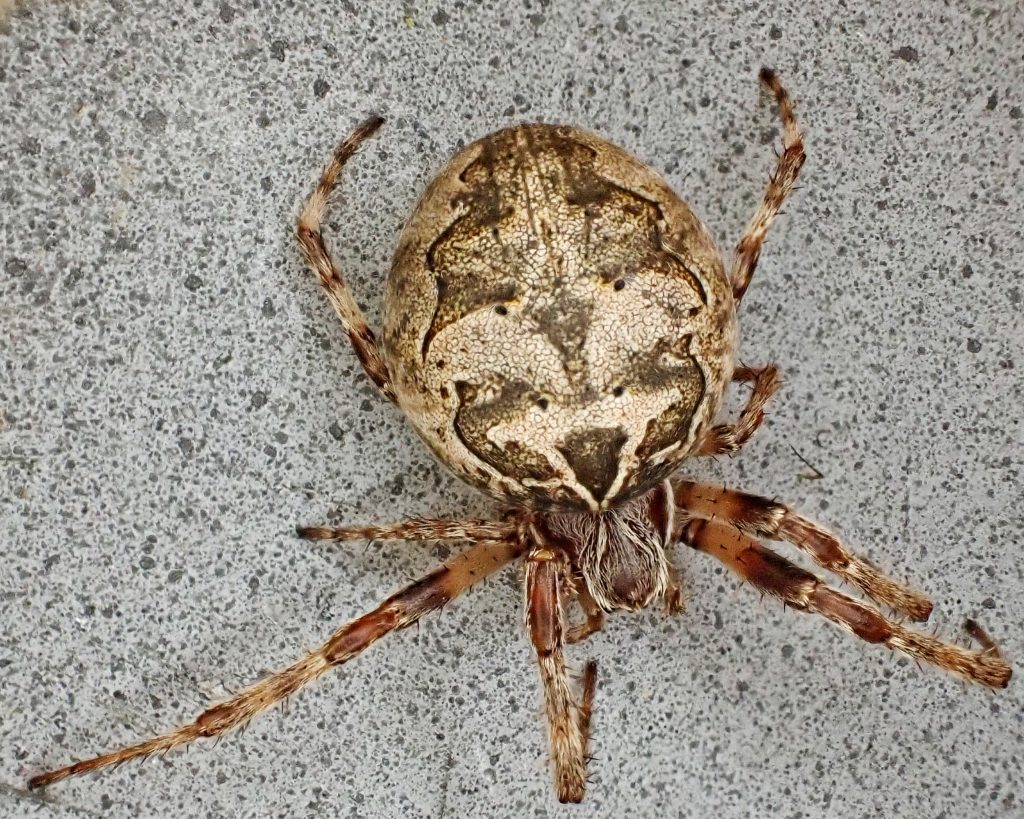
Habitat– “…is found on houses and other buildings, often near water. One collection from West Virginia came from sweeping honeysuckle bushes (Lonicera sp.). Many webs may be found touching one another (Kaston, 1948). In Europe the species is also found on buildings, and especially on bridges and cliffs above water.” v.146 (1974-1975) – Bulletin of the Museum of Comparative Zoology at Harvard College – Biodiversity Heritage Library; also commonly found around lights, especially the lights at outdoor restrooms.
Range– Likely native to Eurasia, now with holarctic distribution; found region wide in the PNW, most commonly around man made structures. See also- Observations · iNaturalist
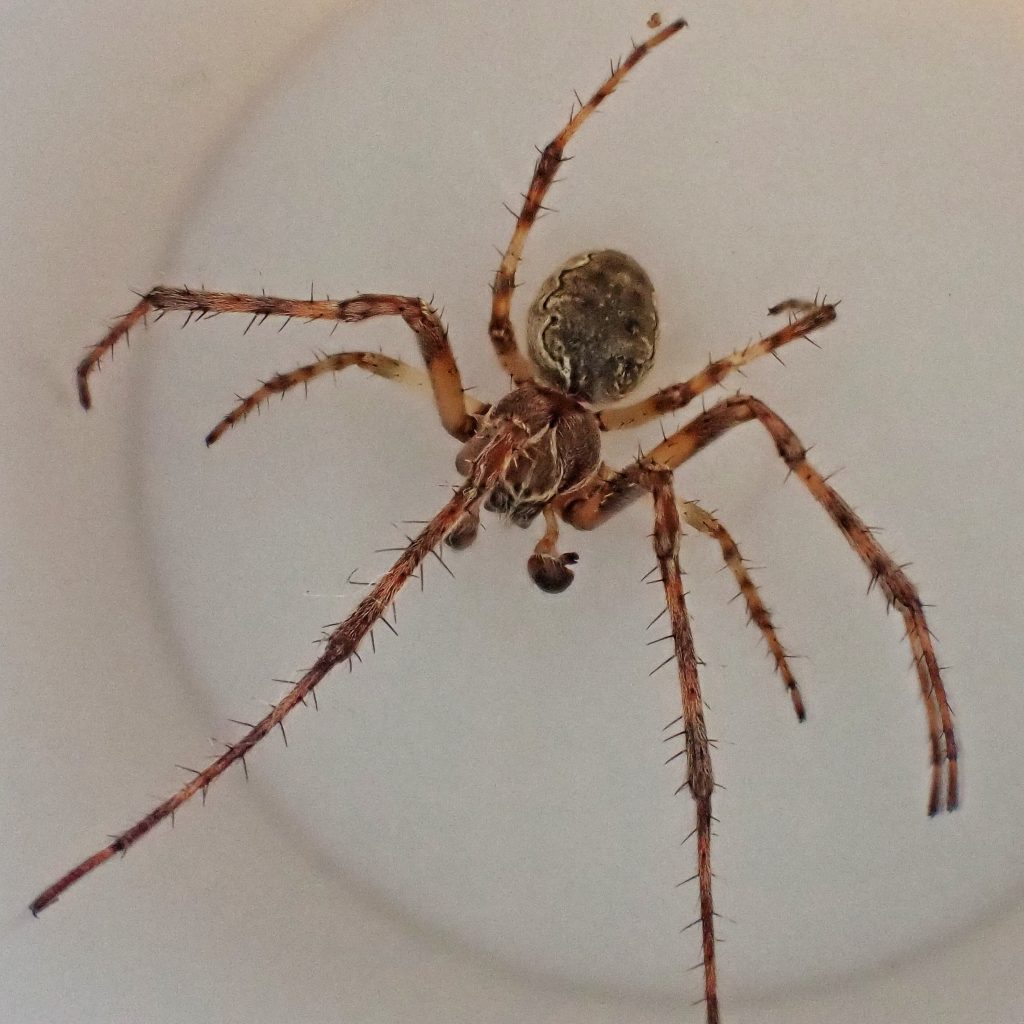
Eats-Primarily flying insects such as flies, midges, mayflies, and caddisflies, but other prey that becomes trapped in the web is also consumed, and females, in particular, may resort to cannibalism during periods of food shortages.
Eaten by– Larvae of parasitoids in the spider wasp family Pompilidae; probably prey for many gleaning birds.
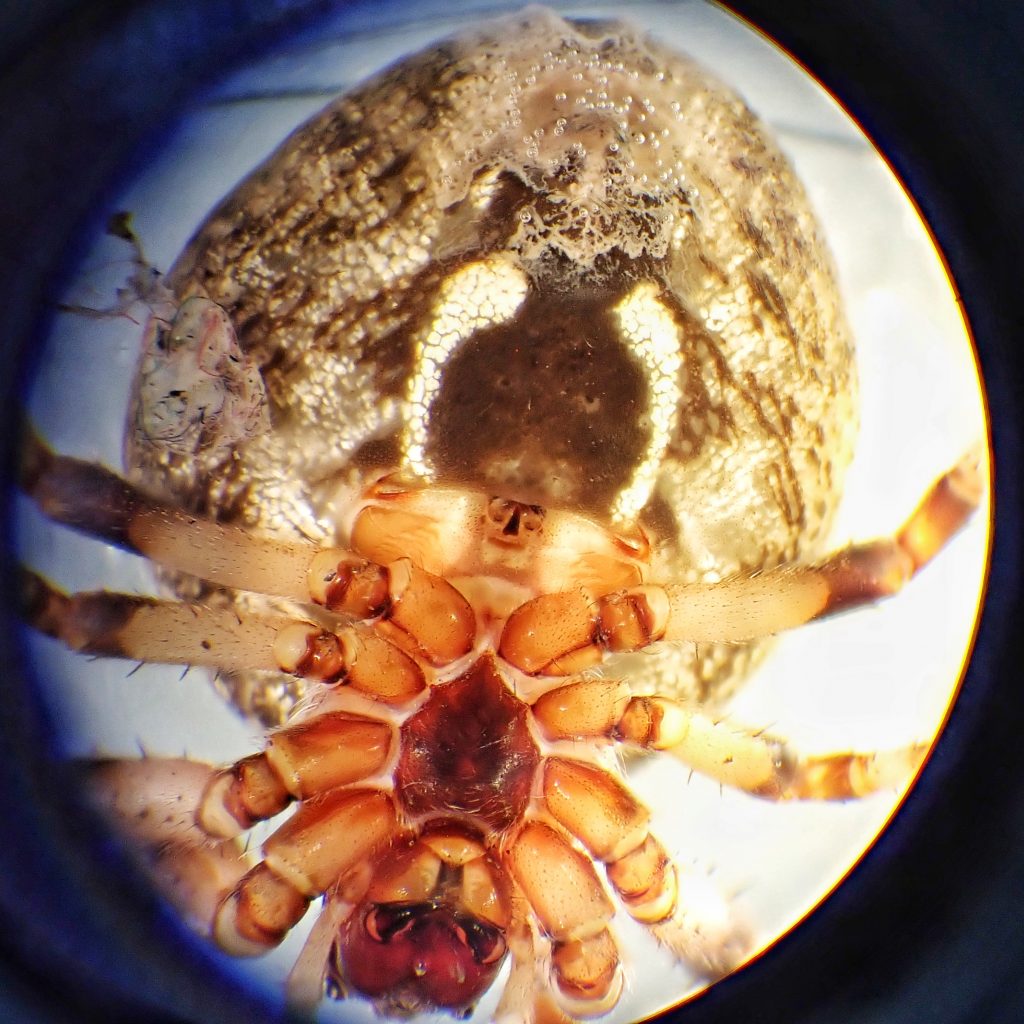
Adults active– Possibly year around, though mostly dormant during the winter months.
Life cycle– “Under laboratory conditions females produce up to 15 cocoons over a lifespan of 1.5 years. All developmental stages are present throughout the year, with adult males abundant mainly in September. Cocoons do not hibernate.” https://d-nb.info/999993666/34
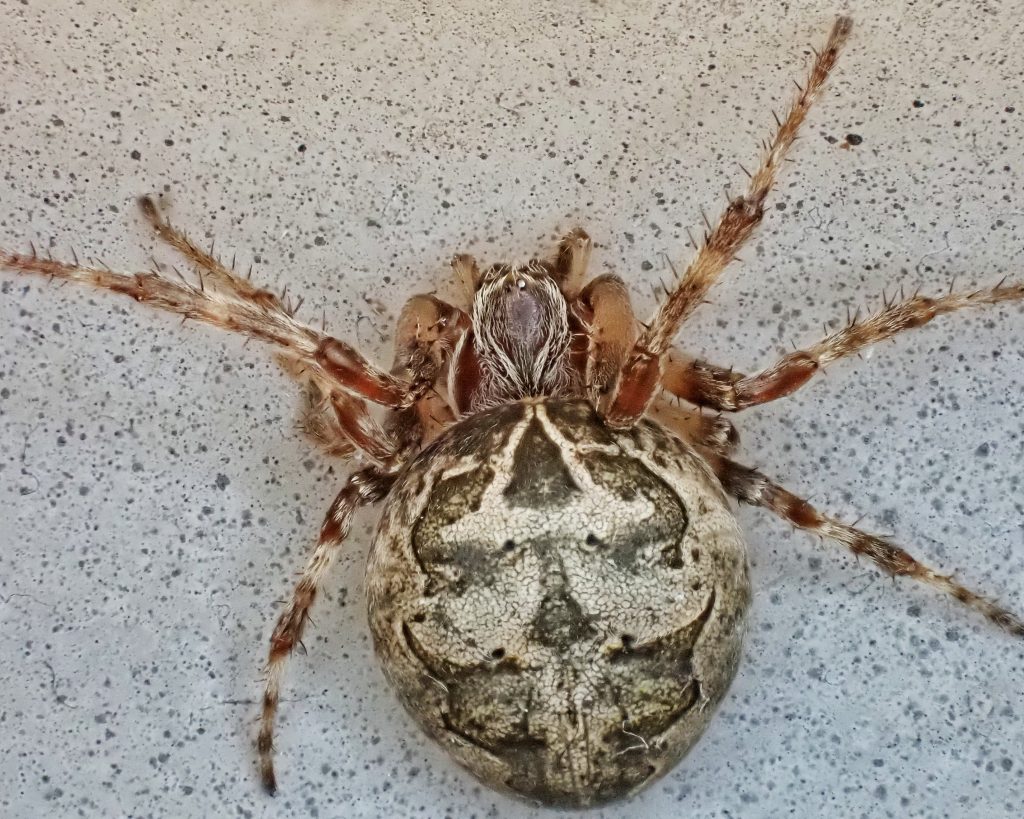
Etymology of names– Larinioides means ‘like Larinia’, which is another genus in the family Araneidae, though I don’t see the resemblance, Larinia having an elongated abdomen. The specific epithet sclopetarius doesn’t seem to come from Latin or Greek words, since I can find nothing that starts with ‘sclop’ or ‘sklop’ in either of those languages. However, it may be a misspelling of the Greek word ‘skolops’, meaning ‘anything pointed’, although I don’t know any Swedish, and my Latin is too poor to know whether Clerck explains the reference in his original description.
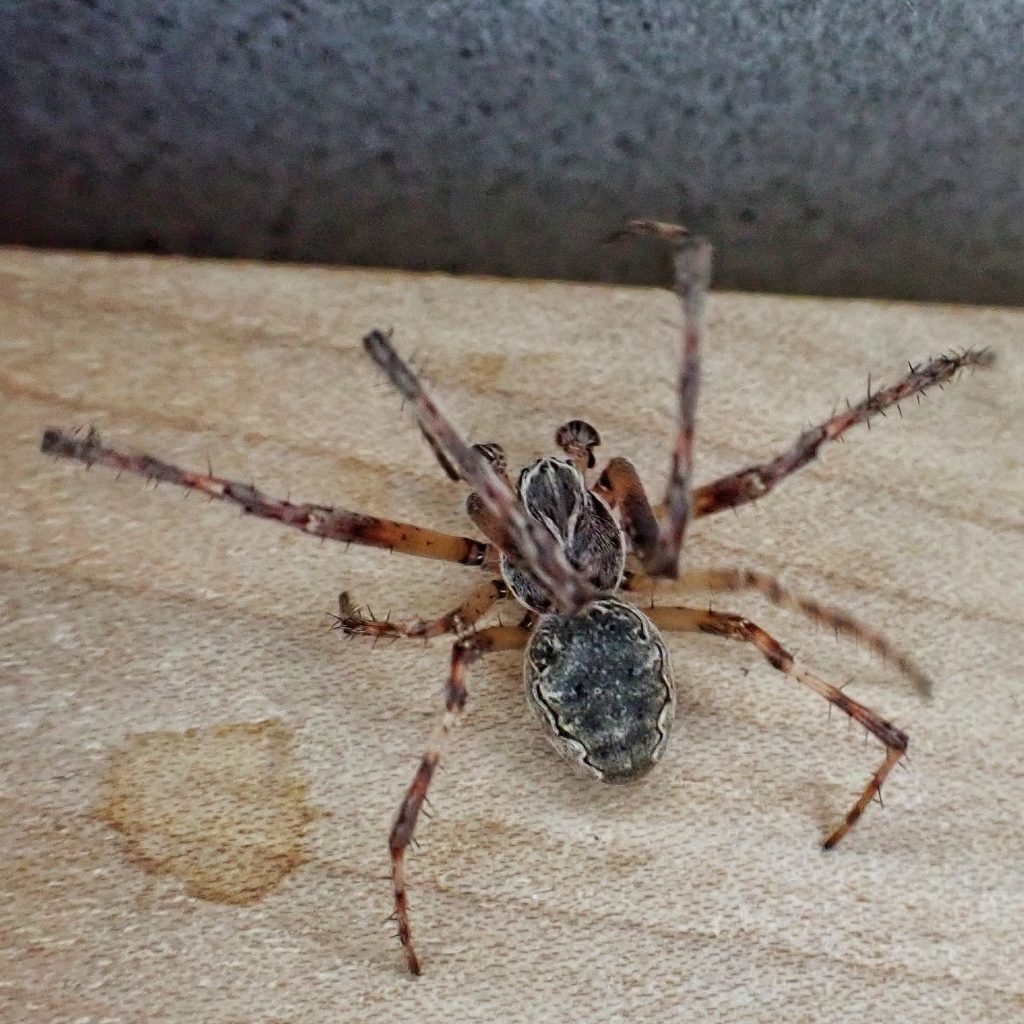
Species Larinioides sclopetarius – Gray Cross Spider – BugGuide.Net
https://bugeric.blogspot.com/2015/02/bridge-orbweaver-gray-cross-spider.html
Genus Larinioides – Furrow spiders – BugGuide.Net
Summary for Larinioides sclopetarius (Araneae)
Facts You Did Not Know About The Larinioides Sclopetarius Spider | Pestclue
Gray Cross Spider: Facts, Identification & Pictures
https://en.wikipedia.org/wiki/Larinioides_sclopetarius
https://sci.bban.top/pdf/10.11646/zootaxa.3894.1.6.pdf?download=true
https://d-nb.info/999993666/34
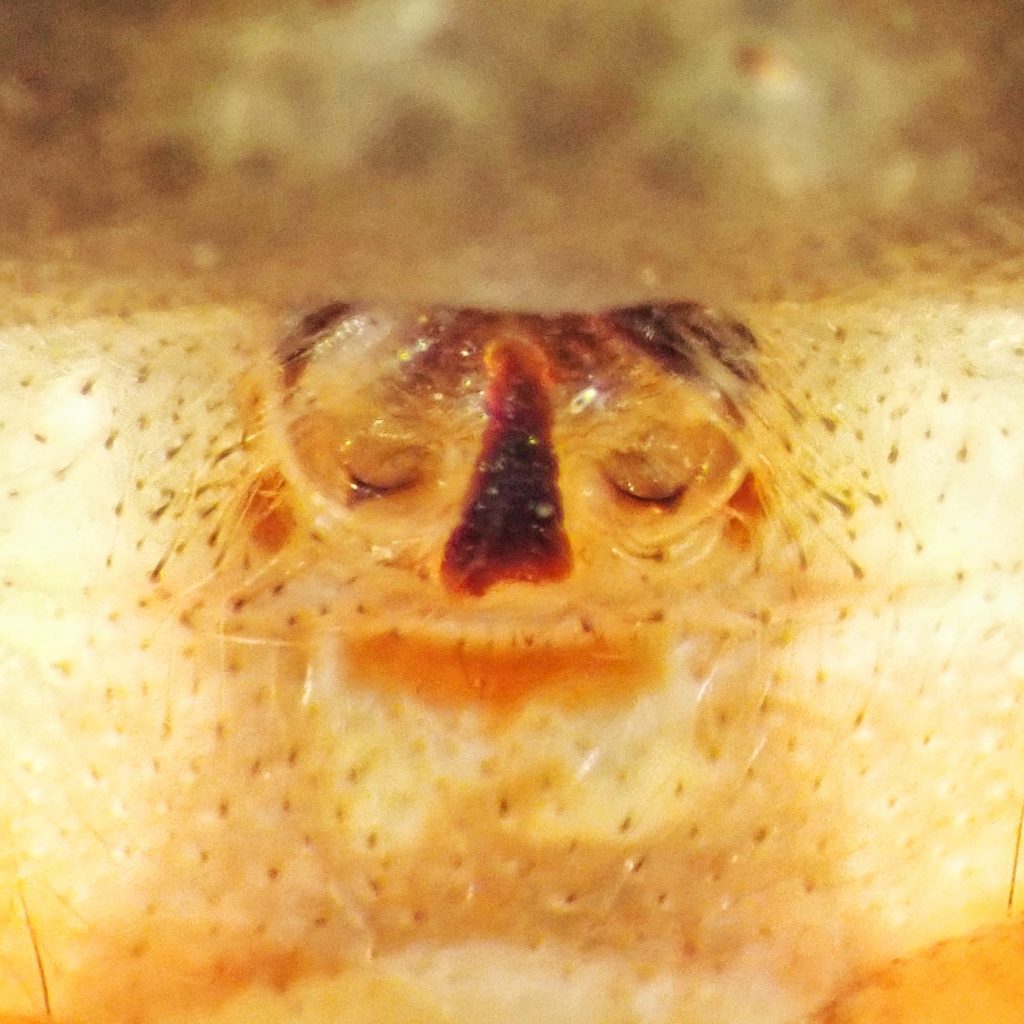
1 thought on “Larinioides sclopetarius (Grey Cross Spider)”